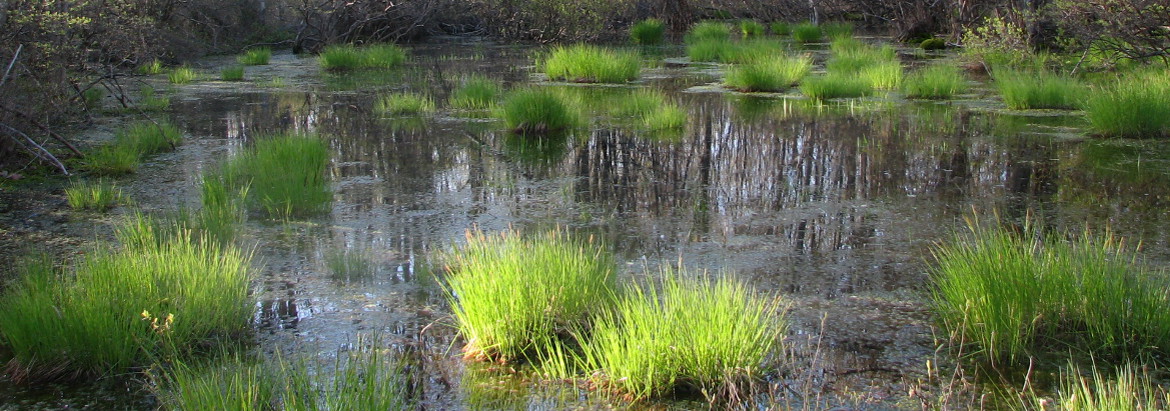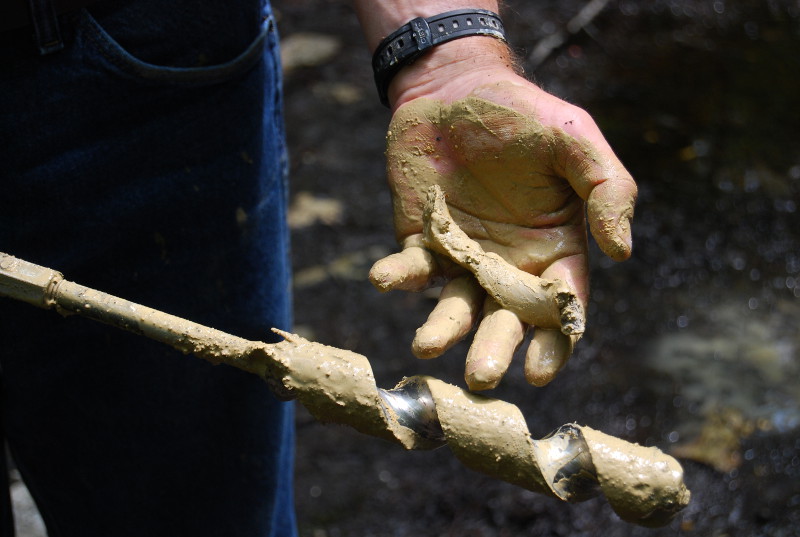 Vernal Pool Soils
Vernal Pool Soils
Vernal pools tend to have an impermeable layer that results in ponded water. The soil texture (the amount of sand, silt, and clay particles) typically contains higher amounts of fine silts and clays that lower percolation rates. Pools that retain water for a sufficient length of time will develop hydric soils. Hydric soils form when the soil is saturated from flooding for extended periods of time and anaerobic conditions (lacking oxygen or air) develop.
Hydric soils have a mottled appearance with bright red iron accumulations and light gray iron depletions. These features may appear in the lower horizons of seasonal pools as a result of anaerobic conditions. A soil may also be deemed "hydric" if it meets criteria set by the USDA-NRCS (https://soils.usda.gov/use/hydric/). Typical hydric soils in Pennsylvania meet F3 Depleted Matrix or A2 Histic Epipedon criteria. F3 Depleted Matrix soils have a grayish tint to the surface horizon while the A2 Histic Epipedon soils have an accumulation of organic matter yielding a dark black color.
Most vernal pools have a layer of organic soil overlying the mineral soils. The amount of organic material that can accumulate in the pool basin increases with the length of time a pool is typically inundated.








